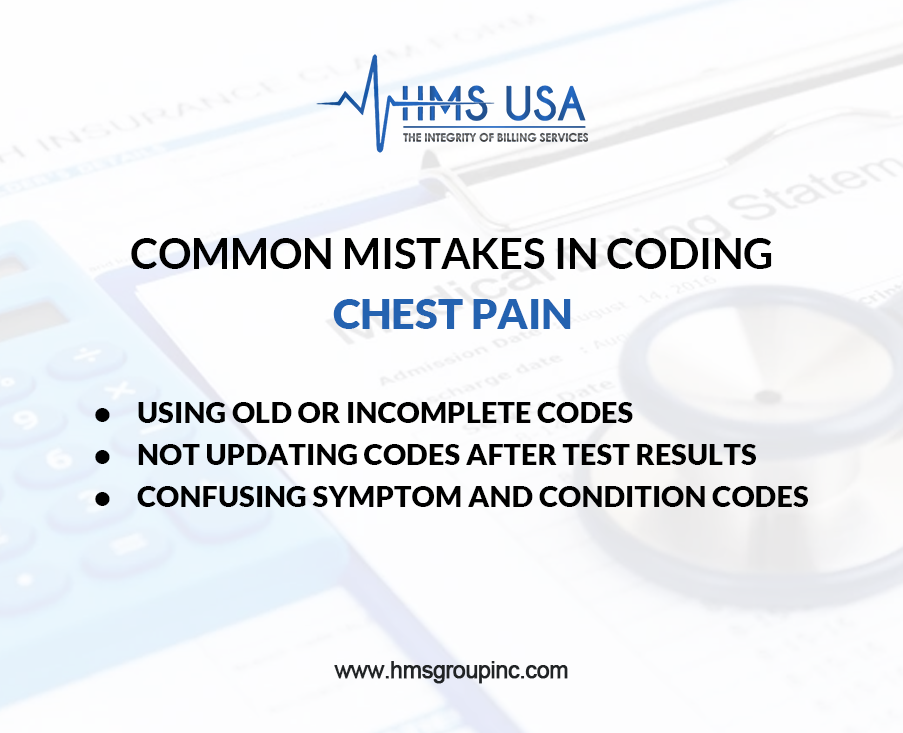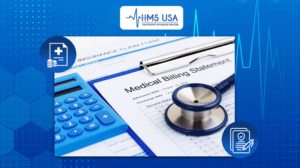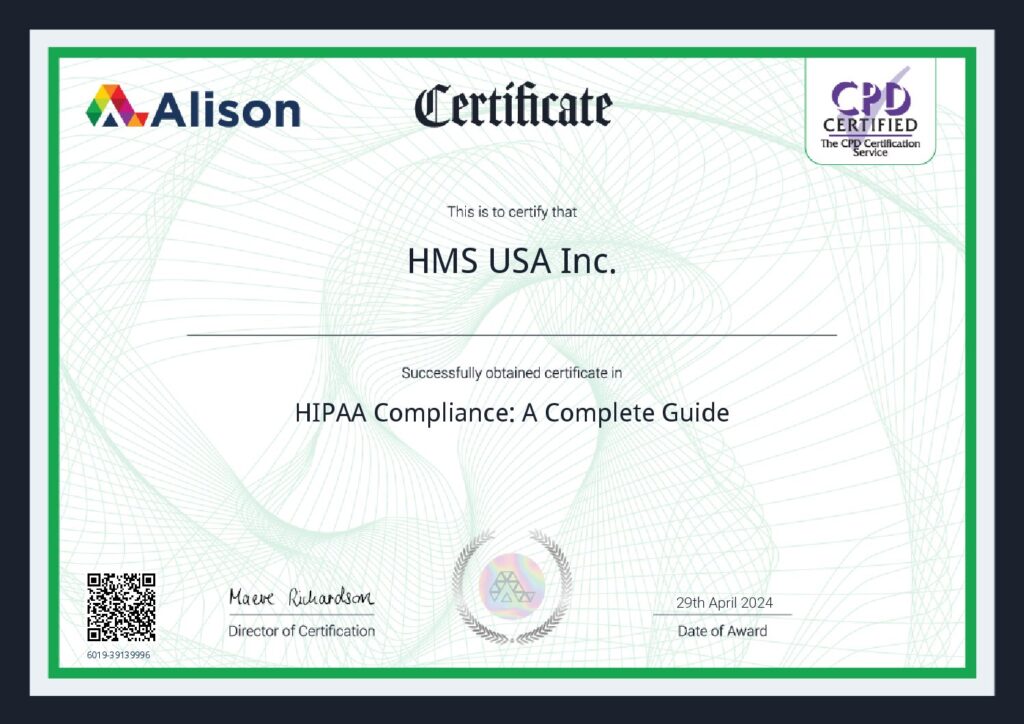Accurate ICD-10 coding is very important in medical billing, insurance claims, and keeping patient records. It makes sure each diagnosis is recorded correctly so healthcare providers can get paid properly and on time.
Chest pain is a common and sometimes complicated symptom. It can be caused by anything from a simple muscle strain to a serious heart problem. That’s why coding it correctly is so important for both proper diagnosis and accurate insurance claims.
This guide explains the ICD-10 codes for chest pain and related conditions. It helps healthcare professionals document cases correctly, reduce claim denials, and follow billing rules.
Understanding ICD-10 Codes for Chest Pain
The International Classification of Diseases, Tenth Revision (ICD-10) is a standardized system used globally to code diagnoses, symptoms, and medical procedures. In healthcare billing, these codes serve as the foundation for claims submission, reimbursement, and statistical reporting.
Accurate ICD-10 coding ensures that the patient’s condition is correctly documented and that payers understand the medical necessity of the provided services. Proper coding minimizes claim rejections, improves revenue cycle efficiency, and supports better patient care.
For cases involving chest pain, the primary ICD-10 code is R07.9, Chest pain, unspecified. This code is used when the cause of the pain is not clearly identified or documented.
Common ICD-10 Codes Related to Chest Pain
Chest pain can stem from various causes, and ICD-10 provides multiple codes to describe specific types and characteristics of the pain. Selecting the correct code ensures that documentation aligns with clinical findings.
Below are the most common chest pain ICD-10 codes used for chest pain:
R07.1 – Chest Pain on Breathing
This code is used when a person feels chest pain while breathing in or out. It often happens due to problems with the lungs’ lining (pleura) or chest muscles.
R07.2 – Precordial Pain
This means pain in the front part of the chest, near the heart. It can sometimes be related to heart conditions, so doctors usually check it carefully.
R07.81 – Pleurodynia
This refers to sharp or stabbing chest pain caused by irritation or infection of the chest muscles or the lining of the lungs. It can also happen after a viral illness.
R07.82 – Intercostal Pain
This code is used when the pain occurs between the ribs. It often results from muscle strain, nerve irritation, or inflammation in that area.
R07.89 – Other Chest Pain
This code covers chest pain that doesn’t fit into any of the specific types above but is still important enough to be noted by the doctor.
R07.9 – Chest Pain, Unspecified
This ICD-10 Code for chest pain unspecified, is used when the exact cause of chest pain isn’t known yet. Doctors use it while they continue tests to find the reason for the discomfort.
ICD-10 Codes for Specific Chest Pain Conditions
Chest Discomfort ICD-10 Codes
Choosing the right chest discomfort ICD-10 code for chest pain is important for proper medical records, billing, and insurance claims. Chest pain can have many causes, heart problems, muscle strain, or breathing issues, so using the correct code helps doctors document symptoms accurately and avoid claim problems.
R07.89 –ICD-10 Code For A typical Chest Pain
This code is used when chest pain doesn’t fit the usual signs of heart-related pain. It’s for vague or unusual pain while doctors figure out the cause.
R07.89 – Chest Wall Pain
Also used for pain from muscles, ribs, or injuries in the chest area. Noting the cause, like muscle strain or inflammation, helps show it’s not heart-related.
R06.02 – Shortness of Breath
Sometimes chest pain comes with difficulty breathing. This code is added to give a full picture of the patient’s symptoms and possible health issues.
Coding Tips for Accurate Billing and Reimbursement
Tips for Accurate ICD-10 Coding for Chest Pain
Accurate ICD-10 coding is important for clear medical records and getting insurance claims paid on time. Here are some easy tips to help:
- Connect Symptoms to a Diagnosis
If a patient has chest pain or shortness of breath, try to link it to a confirmed condition like angina or a heart attack. This helps insurance understand why tests or treatments were done.
- Keep Documentation Clear
Write detailed notes about:
- Where the pain is: center of the chest, left side, or a specific spot
- How long it lasts: sudden, comes and goes, or ongoing
- Other symptoms: trouble breathing, dizziness, or a fast heartbeat
Clear notes make it easier to choose the right code and avoid claim problems.

Struggling with complex ICD-10 codes for chest pain or shortness of breath? HMS USA Inc. certified medical coders ensure compliant documentation, faster claim approval, and fewer denials. Contact HMS USA Inc. today for precise coding and stress-free reimbursements!
Use Symptom and Diagnosis Codes Together
Sometimes you need both a symptom code and a diagnosis code. For example, use R07.9 (chest pain, unspecified) with I20.9 (angina) to give a full picture of the patient’s condition.
Choose Specific Codes When Possible
Only use “unspecified” codes if you don’t know the exact cause. Always pick a specific code when the diagnosis is clear, because insurance prefers it.
Following these steps can help doctors and coders avoid mistakes, reduce claim denials, and stay compliant with ICD-10 rules.
Common Mistakes in Coding Chest Pain
Chest pain is common but tricky to code. Here are mistakes to watch out for:
- Using old or incomplete codes: Always use the latest, most accurate ICD-10 codes to avoid denied claims.
- Not updating codes after test results: If tests show a clear diagnosis, update the code instead of keeping just the symptom code.
- Mixing up symptom and condition codes: Don’t confuse chest pain (symptom) with angina or heart attack (condition). The right code ensures records are correct and insurance claims are approved.
Role of Medical Billers and Coders in ICD-10 Compliance
Medical billers and coders are key to making sure healthcare providers use the correct ICD-10 codes. Accurate coding helps avoid claim denials, ensures timely payments, and keeps healthcare organizations following the rules.
Accuracy and Compliance
Billers and coders turn medical records into the right ICD-10 codes. Careful coding reduces mistakes and ensures providers get paid on time. Staying updated on coding rules and insurance requirements helps keep the process smooth and compliant.
Training and Audits
Regular training and coding audits are important. Training helps coders learn updates, and audits catch mistakes before claims are submitted. This protects the organization from financial losses and keeps patient data accurate.
Working Together
Doctors and coders need to communicate clearly. Providers should document patient care fully, and coders should clarify anything unclear. This teamwork ensures claims reflect the real care given and are less likely to be rejected.
Final Words
Chest pain can come from many causes, like heart, lung, or muscle issues. Using the correct ICD-10 code ensures proper documentation, faster payments, and fewer claim problems. Keeping up with coding updates and audits improves both compliance and patient care.
For help with ICD-10 coding and medical billing, contact HMS USA Inc to make sure your billing is accurate and efficient.
FAQs
What is the ICD-10 code for chest pain?
The ICD-10 code for chest pain is R07.9. This code is used when a patient has chest pain, but the exact cause hasn’t been found yet.
What is the ICD-10 code for atypical chest pain?
The ICD-10 code for atypical chest pain is R07.89. Doctors use this code when the chest pain doesn’t look like the usual heart-related pain.
What is the ICD-10 code for chest wall pain?
The ICD-10 code for chest wall pain is also R07.89. It’s used when the pain comes from the chest muscles, ribs, or soft tissue instead of the heart or lungs.
When should I use the ICD-10 code for chest pain unspecified?
Use R07.9, Chest pain, unspecified, when the doctor doesn’t yet know what’s causing the pain. It’s often used during the first visit before test results are available.
What is the ICD-10 code for shortness of breath with chest pain?
If someone has both chest pain and shortness of breath, doctors can use the ICD-10 shortness of breath code that is R07.9 and R06.02, to describe both symptoms clearly.









